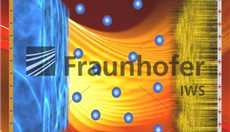Li-S Batteries Progress Well
on

Due to its high theoretical power density, lithium-sulfur technology is regarded as a promising candidate for electric vehicle batteries. As an active cathode material, sulfur has a theoretical specific capacity of 1,672 mAh/g and an average discharge potential of 2.2 V. The energy density of Li-S batteries could be as high as 600 Wh/kg, compared to a maximum of 200 Wh/kg for lithium-ion batteries with intercalation cathodes. Additional benefits of sulfur include higher safety and lower cost due to the abundance of sulfur as a raw material. However, current Li-S batteries fall far short of the number of charge cycles necessary for practical use in electric vehicle.
Researchers at Fraunhofer IWS recently reported significant progress in the development of new cell structures that boost the feasible number of charge cycles by a factor of 7, from 200 to approximately 1400. To reduce performance degradation and battery failure due to mixing of the sulfur with the electrolyte, they developed porous carbon structures with pore dimensions exactly adjusted to maximize sulfur adhesion and hamper mixing with the electrolyte.


Discussion (0 comments)